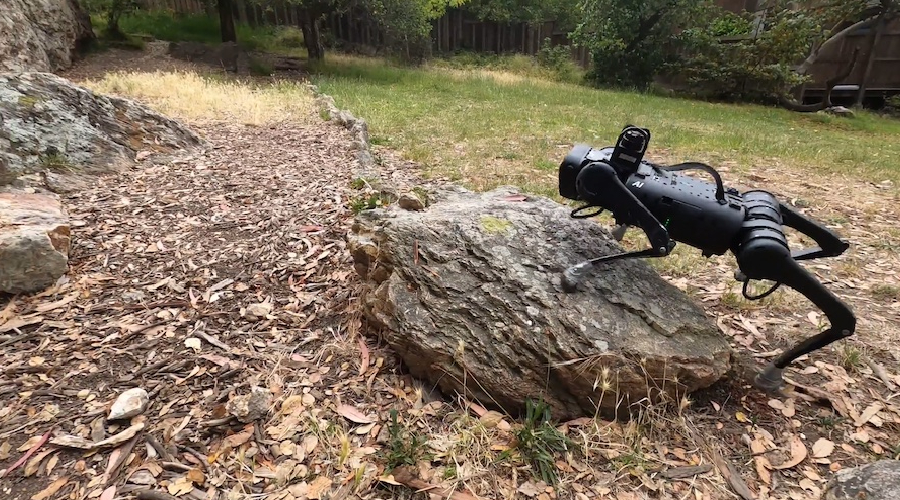
According to a report on the US ScienceDaily website, researchers from the School of Computer Science at Carnegie Mellon University and the University of California, Berkeley, jointly developed an innovative robotic system. The system's robots have the ability to handle a variety of obstacles, including climbing tall stairs, traversing rugged, slippery, steep and varied terrain, and even operating in dark environments. This technological breakthrough provides broader possibilities for the application of robots in complex environments. This research result is expected to provide strong support for future exploration, search and rescue, and rescue missions.

The robot has been rigorously tested on uneven stairs and hills in the park. The team had the robot walk across stepping stones and slippery surfaces, and asked it to climb obstacles as high as a staircase similar to what humans would jump on. By relying on vision and a small onboard computer, the robot was able to quickly adapt and successfully complete the challenges of these terrains.
The researchers used a simulator with 4,000 cloned robots to train the robots. The robots were trained in simulators and learned to walk and climb on challenging terrain. Unlike traditional methods, this simulator can store the motor skills learned by the robot during training in a neural network. The researchers then replicated these empirical skills onto real robots, allowing the robots to quickly gain experience. This method can help robots better adapt to various complex environments and improve their movement capabilities.
Most robotic systems use cameras to create maps of the environment and plan actions. However, this process is slow and inaccurate, causing the robot to move awkwardly.
The new robotic system no longer requires mapping and planning stages, but directly integrates visual input with the robot's control, allowing the robot to decide how to move based on what it sees. The system doesn't even require explicit instructions on how to move the legs, and the robot is able to react quickly and successfully traverse the current terrain.
Because there is no mapping or planning involved, and the movements are trained with machine learning, the robot is low-cost to produce, at least 25 times cheaper than existing robots.
Deepak Pathak, assistant professor at the Robotics Institute, said: "Enabling small robots to climb stairs and handle a variety of environments is critical to developing robots that can be used in people's homes as well as in search and rescue operations. The new The robotic system creates a powerful and adaptable robot that can perform many daily tasks."
Original link: https://www.sciencedaily.com/releases/2022/ 11/221116150653.htm
The above is the detailed content of Science Daily: Low-cost robots can overcome all challenges. For more information, please follow other related articles on the PHP Chinese website!
 Application of artificial intelligence in life
Application of artificial intelligence in life
 What is the basic concept of artificial intelligence
What is the basic concept of artificial intelligence
 How to resolve WerFault.exe application error
How to resolve WerFault.exe application error
 Win10 taskmgr.exe file application error solution
Win10 taskmgr.exe file application error solution
 How to open win11 control panel
How to open win11 control panel
 cad break line command
cad break line command
 What are the virtual currencies that may surge in 2024?
What are the virtual currencies that may surge in 2024?
 How to delete your own works on TikTok
How to delete your own works on TikTok




